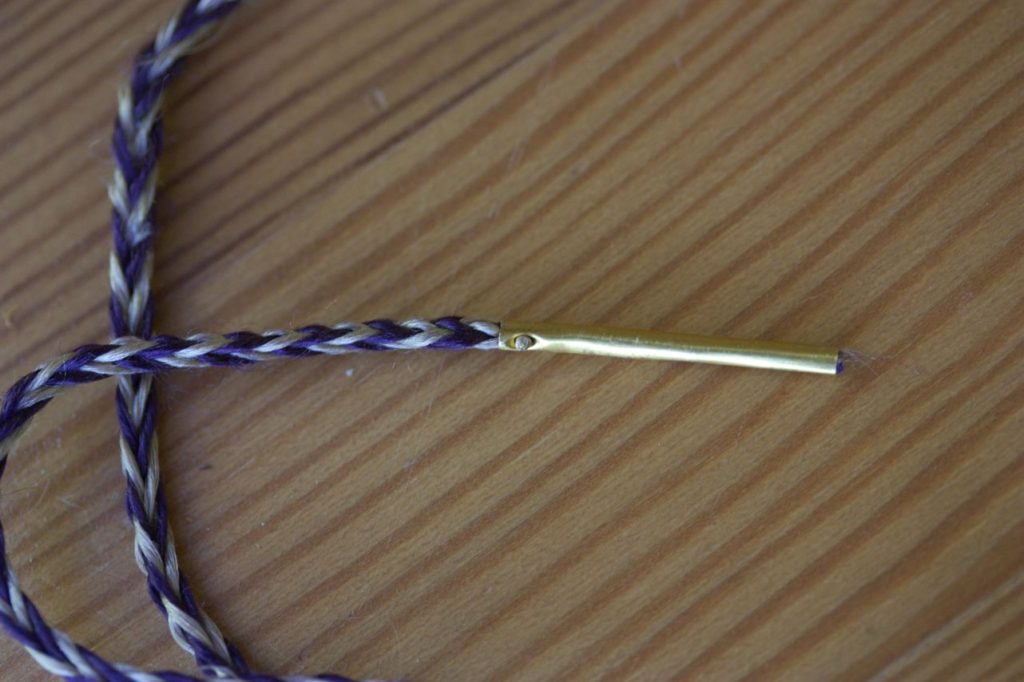Search the Blog
Latest Comments
Lace Chapes - Or: How To Tiny Metal.
Lace chapes, for those of you not into medieval dress accessories, are like the plastic endcaps on shoelaces - they protect the lace from unraveling, and they make threading the lace through holes or eyelets much easier. Especially in the later Middle Ages, the style of dress for both women and men uses lots of laces to get things nice and tight-fitting on the body... and for all those laces, chapes are really handy.
The tiny problem is, though: The chapes you can usually buy today are way too large, and they are often cast, while the originals were made from sheet metal with use of a hammer and much smaller. How much smaller? Well. The modern ones I could find quickly when pretending to shop for some have a top diameter of about 5 mm. The medieval originals that I have nice documentation for have a top diameter of between 2 and 3 mm. That is... much smaller.
Most modern laces with chapes are also held together with a few stitches, while those original chapes that survived with lace in them are usually riveted to lock in the lace.
So recently, I have gotten some material to give this a try... then I played around some more. Then I bought some additional tools. Then I made some more tools. Fiddled around some more. Researched what was inside those chapes.
I'm getting there now. I can tell you, though: These things are tiny. TINY. And it's incredibly fiddly to set those infinitesitiny rivets without bashing the chape itself to pieces...

...but I'm getting there. This is one of the latest prototypes I've made, with 2 mm diameter at the top. And just so you get an idea of the size, here's a bigger one (with a good 3 mm diameter top) in my fingers:

I had originally planned to make these chapes and sell them, together with rivets, for customers to assemble with their band of choice. It looks to me, though, as if the originals were hammered close around the lace, then riveted for extra security. Even if you put this aside and assume it will be possible to stick enough of the lace into the closed chape, successfully setting a first rivet took me several tries, complete with totally bashed chapes. So I'll have to offer the chapes mounted on laces, all set and finished, to save everybody's nerves.
Which means I had to take a closer look at the laces involved...
Comments 2
The earliest finds from London, according to Dress Accessories, are from mid-13th century; Krabath (STEFAN KRABATH, 'Die hoch-und spätmittelalterlichen Buntmetallfunde nördlich der Alpen', Eine archäologisch-kunsthistorische Untersuchung zu ihrer Herstellungstechnik, funktionalen und zeitlichen Bestimmung, IntArch, 63 (2001)) has first finds listed from Winchester, mid-11th to early 12th century. A find from Höxter is also dated to the 12th century.
My personal guess is that late medieval ones are better known as there were more laces used in the contemporary dress, and more laces means more opportunities to find these things.
Thicker, more elaborate and decorated chapes seem to be more of a very late 15th century, early modern times thing.



